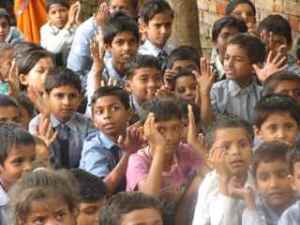By: Sylvie Hughes
Gurgaon, India
18th November 2013
Despite improvements in healthcare in India, accessibility to quality health care remains a challenge for a large number of the population.

The provisional census of 2011 reveals that 68.84% of India’s population live in rural areas. However, according to the National Commission on Macroeconomics & Health (NCMH), 80% of of health infrastructure and resources are situated in urban areas, where only 31% of the population live. This shows a clear imbalance in access to health care facilities. Half of the rural population of India live below the poverty line. They do not have the means of access to hospitals due to lack of proximity to their homes.
Those living in urban slum areas also face problems accessing quality health care. Even at government hospitals, it is necessary to pay fees for general health check-ups, which many families cannot afford to pay. Despite living in closer proximity to hospitals, many people lack sanitation and health care awareness. In Uttar Pradesh, the most common reason for not getting vaccinations for children was lack of awareness about vaccines.
India is the open defecation capital of the world, with 638 million people defecating in the open. Every day in India over 1600 children die due to diarrhea-related diseases. This is because more than half the population do not wash their hands after defecation, making diseases such as respiratory and gastrointestinal infections major killers among children and adults alike.
These figures give only a glimpse of the problems faced by lack of hygiene awareness and sanitation facilities.
HEEALS (Health, Education, Environment And Livelihood Society), is working on its Free Health Camp pilot project in rural and urban slum areas of Uttar Pradesh, to provide access to free health check-ups in schools and orphanages, as well as providing free water purification tablets, water filtration systems and mosquito nets to families. Through providing health care education and awareness to those in need, HEEALS is working to reduce the number of disease related deaths and school dropout rates. We need your help – find out more about HEEALS projects and what we do at http://www.heeals.org and support our work!
Gurgaon, India
18th November 2013
Despite improvements in healthcare in India, accessibility to quality health care remains a challenge for a large number of the population.

The provisional census of 2011 reveals that 68.84% of India’s population live in rural areas. However, according to the National Commission on Macroeconomics & Health (NCMH), 80% of of health infrastructure and resources are situated in urban areas, where only 31% of the population live. This shows a clear imbalance in access to health care facilities. Half of the rural population of India live below the poverty line. They do not have the means of access to hospitals due to lack of proximity to their homes.
Those living in urban slum areas also face problems accessing quality health care. Even at government hospitals, it is necessary to pay fees for general health check-ups, which many families cannot afford to pay. Despite living in closer proximity to hospitals, many people lack sanitation and health care awareness. In Uttar Pradesh, the most common reason for not getting vaccinations for children was lack of awareness about vaccines.
India is the open defecation capital of the world, with 638 million people defecating in the open. Every day in India over 1600 children die due to diarrhea-related diseases. This is because more than half the population do not wash their hands after defecation, making diseases such as respiratory and gastrointestinal infections major killers among children and adults alike.
These figures give only a glimpse of the problems faced by lack of hygiene awareness and sanitation facilities.
HEEALS (Health, Education, Environment And Livelihood Society), is working on its Free Health Camp pilot project in rural and urban slum areas of Uttar Pradesh, to provide access to free health check-ups in schools and orphanages, as well as providing free water purification tablets, water filtration systems and mosquito nets to families. Through providing health care education and awareness to those in need, HEEALS is working to reduce the number of disease related deaths and school dropout rates. We need your help – find out more about HEEALS projects and what we do at http://www.heeals.org and support our work!
Sources: Government of India Ministry of Health & Family Welfare; UNICEF; NCMH; Provisional Census of India (2011)

.jpg)

Masters Homeoapthy Appreciate you Informative blog. It is really very helpful information.
ReplyDeleteMasters Homeopathy Hospitals
Homeopathy Treatment
Masters Homeopathy Clinic Timings
Dr ravi kiran
Masters Homeopathy Contct Number
Masters Homeopathy Success rate